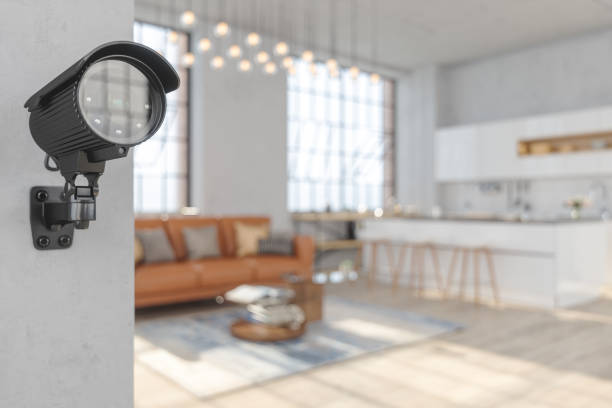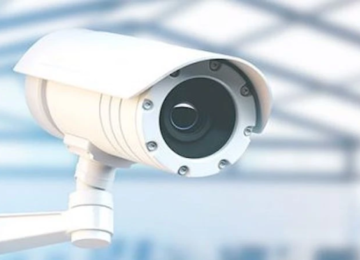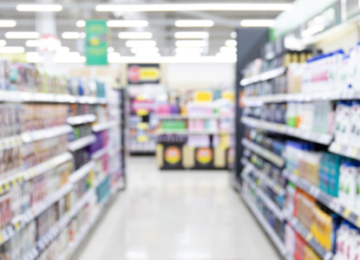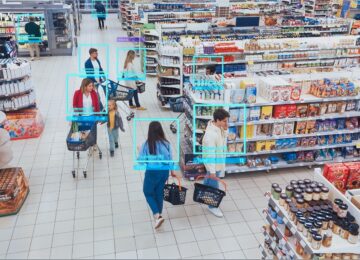What equipment is needed for effective intelligent video surveillance?

When setting up a video surveillance system, the goal is not just to record 8K footage of your store. The quality of your video surveillance system directly affects its ability to reduce unknown shrinkage.
Blurred or distorted videos, significant latency, and defective recordings can make your video surveillance system ineffective. Outdated or poorly maintained equipment creates conditions that hinder your system’s performance. For a traditional system, this results in more time spent reviewing recordings or an inability to clearly identify a thief, making it difficult to apprehend them on their next visit. When you upgrade your system by integrating artificial intelligence, these issues become even more critical.
Our commitment is to significantly reduce your unknown shrinkage, and our data shows that we can achieve this: our clients see a reduction of approximately 60%. However, this level of reduction requires a modern video surveillance setup. If the image quality is compromised, AI will still help reduce theft, but not to its full potential.
It’s important to remember that Veesion's reliability also depends on the quality of the cameras. The clearer the images, the more reliable the results.
- Nicolas, Manager of a Carrefour store and Veesion user
Intelligent video surveillance is a key part of your security strategy, but its effectiveness relies on the overall quality of the system. Veesion connects your video surveillance equipment with the individuals monitoring security. If the cameras malfunction or the people reviewing footage aren't responsive enough, even the best system won't effectively reduce your unknown shrinkage.
So, how can you tell if your video surveillance system meets the necessary standards? If it doesn't, how do you choose the right equipment to upgrade it? And how can you ensure that your new equipment remains effective for as long as possible? This white paper will answer all these questions.
Is my video surveillance system up to standard?
Evaluate your equipment's quality
A security camera typically lasts between 5 to 10 years, depending on its initial quality and regular maintenance. Start by considering how long your video surveillance system has been in place and whether it’s under a maintenance contract. If it's over 10 years old and/or hasn’t been well-maintained, you would likely benefit from upgrading it. Otherwise, there may be simple steps you can take to improve your image quality.
The performance of our intelligent video surveillance system depends not only on the quality of the cameras but also on other factors. Issues with receiving alerts and latency can be caused by the quality of your internet connection or, paradoxically, by overly high image quality. UltraHD videos are very large, and processing them takes longer.
- Romain GALLET, Sales Director France / BENELUX
Analyse image quality
If you're wondering whether it's time to upgrade your video surveillance system, the primary criterion is your ability to analyze the footage. For instance, if you struggle to determine whether a customer’s hand is by their side or in their pocket, you can assume that even the most advanced AI will face the same difficulty.
Image analysis issues generally stem from two types of problems:
- Poor image resolution leading to blurry output.
- A low-quality sensor transmitting an image that is too dark.
While the second issue can be corrected by adjusting the lighting around the affected cameras, the first is often related to the equipment itself. The quality of the camera's lens directly affects the video resolution, frame rate, and overall image clarity.
Address poor camera positioning
Sometimes, poor image quality from surveillance cameras is not due to the equipment itself but rather its positioning. The good news is that if your issues stem from this, they can be quickly resolved.
For example, the focus of your cameras will be better if their depth of field is limited. In other words, if cameras are positioned in front of aligned shelves, movements in the background can disrupt the autofocus, reducing image quality. Similarly, if their field of view is too wide and covers more than one aisle, image quality will suffer. A general rule to ensure the best image quality is: one aisle = one camera.
The only exception to this rule applies to the most sensitive aisles (alcohol, personal care products, etc.). Here, our experts recommend doubling the cameras to always have a frontal view of customers.
A good practice for every manager when setting up or renewing their video surveillance system is to install cameras on both sides of the aisle, particularly in the most sensitive areas. With a camera on each side, you always have a view of the potential thief, eliminating any ambiguity about concealment.
- Romain GALLET, Sales Director France / BENELUX
It's also important to pay attention to lighting conditions. Inadequate lighting or direct exposure to bright lights can negatively impact image quality. Shadows, overexposure, or underexposure can obscure critical details and make it difficult to identify people or objects on video.
If some cameras are exposed to too much light, you can reduce the intensity of the lights or reposition the cameras. If you have shadowy areas, you can add lights or use more advanced security cameras, such as those with night vision, which can capture high-quality images even in complete darkness.
Another cause of quality loss related to camera positioning is the distance from the subject. Placing cameras too far from the subject can result in a loss of detail and clarity. It's essential to determine the appropriate distance based on the specific requirements of each surveillance scenario. Adjusting the camera placement can help, but a high-quality camera should be able to adjust its focus to provide a clear image without needing to be moved. Therefore, repositioning is more of a temporary fix than a permanent solution.
Finally, quality loss can occur if the lens is partially obstructed during in-store events. For example, a camera positioned near a cooking demonstration that generates steam may regularly get dirty, reducing its performance.
Optimise outdoor cameras perfomance
If you have surveillance cameras outside your store, such as monitoring the street or parking lot, your equipment must meet certain standards to ensure durability. Rain, snow, extreme temperatures—these cameras are exposed to the elements, which can significantly reduce the quality of your recordings and the lifespan of your outdoor installations over time.
To ensure that water, sunlight, or dust doesn't quickly diminish your equipment's capabilities, choose high-quality materials and check the IP (Ingress Protection) rating of the security systems before purchasing. Additionally, we recommend regularly inspecting your equipment, especially after a storm or days of intense sunlight.
Tip Box: Outdoor camera recordings are often requested by customers in case of parking lot disputes, so having this equipment can add value.
I keep the recordings of my outdoor cameras for a month because, when a car gets scratched in the parking lot, we are often asked to review the footage.
- Christopher, Manager of Carrefour Contact
Additional factors affecting recording quality
The cameras themselves aren't the only factors impacting the performance of intelligent video surveillance. Here are other aspects to explore to identify the source of your equipment's quality issues.
Resolve network connectivity issues
Network connectivity problems in intelligent video surveillance systems, such as image loss or latency, can seriously compromise real-time monitoring capabilities. These problems are often caused by insufficient bandwidth, which can't effectively handle the high volume of data generated by high-definition video streams. Poor signal quality or frequent network interruptions can also affect the reliability of video transmissions, making effective monitoring and rapid response to security incidents difficult. To ensure optimal performance, it's crucial to address these connectivity issues by improving network infrastructure and choosing solutions that can handle the large amount of data processed by modern video surveillance systems.
Ensure software compatibility
As your equipment ages, it may become obsolete and incompatible with certain software, such as Veesion, preventing it from supporting our solution. However, this incompatibility doesn't necessarily mean you need to replace all your cameras. The issue may lie with the video recorder, as is sometimes the case with our solution.
Veesion requires that recorders have an RTSP port. Older models don't have this type of connection, so you'll need to upgrade this equipment to enable intelligent video surveillance. This upgrade costs a few hundred euros, but all camera providers include video recorders, cameras, and maintenance contracts in their monthly subscription.
- Romain GALLET, Sales Director France / BENELUX
Use correct video compression
To ensure the best responsiveness for surveillance system operators, video files need to be transmitted in the lightest possible format without losing quality. With the right format, you'll achieve optimal video quality that accurately captures all details and colors.
Lightweight files also help limit your storage costs. Continuously and securely storing 30 days of UHD recordings would be quite expensive.
Adjust system configuration
Some of the previously mentioned issues could simply be due to poor settings and easily resolved. For example, you might be able to adjust the image compression settings or reduce the resolution to lighten the transmitted data, thereby shortening processing times.
Whatever system is installed, you can often adjust the settings to improve performance. For instance, you can select the resolution transmitted from the cameras and reduce it to between 2 and 4MP, thereby reducing the file size.
- Romain GALLET, Sales Director France / BENELUX
Other simple actions, such as increasing bandwidth or expanding storage, can also solve some issues without requiring an expensive equipment upgrade.
The most popular
Related news
Discover what Veesion can do for you. Do you have one or more stores?
Our team will contact you within 48 hours





